What do Termites Look Like?
– How To Identify Termites for Effective Eradication
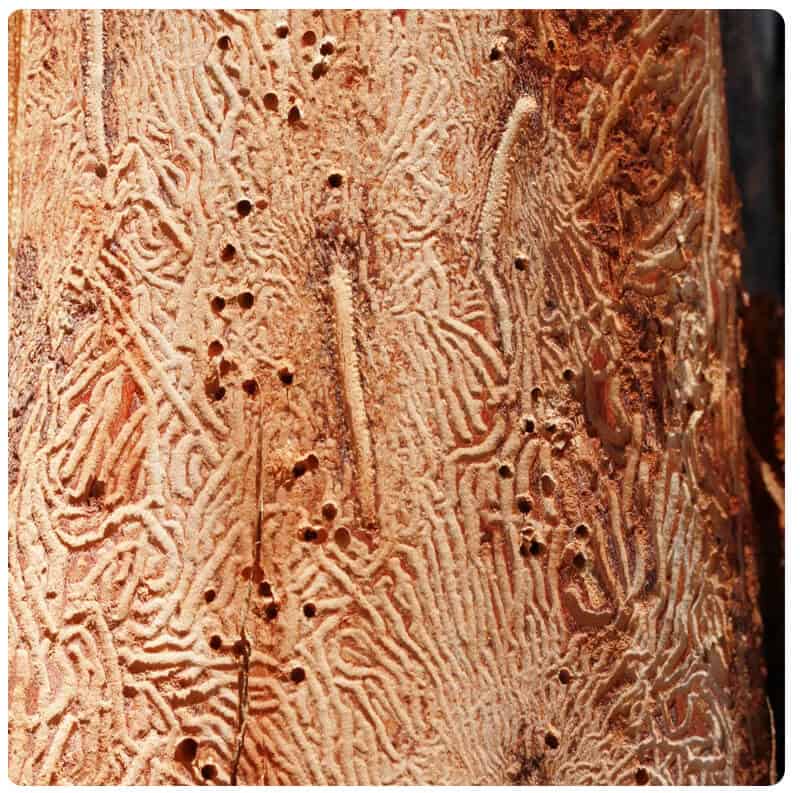
Termite Identification – What do Termites Look Like
– Identify Termites for Effective Eradication
There are 360 termite species in Australia. Termites form a natural part of the ecosystem, and most do more good than harm. They help to break down dead plant matter and they are source of nutrition for many animals. Many termite species don’t cause damage to structures which is why it is so important to identify species to which the termites belong.
Termites are a particular problem in Brisbane because they are attracted to the warm and humid climate. There are huge numbers of underground termite colonies, full of worker termites always on the lookout for some tasty timber to tuck into. Termites are small and often go unnoticed. You are more likely to notice the damage they cause before you see these pests.
Identifying the termite species plays an important role in ensuring effective termite control. If you know what type of termite, you’re up against you can also take effective measures to protect the timber in surrounding structures. Termite treatments may include installingtermite barriers, setting bait traps or using pest sprays.
IdentifYING Termites VS Ants
Termites look a lot like ants, so people often misidentify these very different pests. Similarly, flying alleles may be confused with flying ants. This could be a expensive mistake. If those flying insects are termites looking to set up a new colony, yours could be their home of choice.
Flying ants have defined waists. Termites have a straight waist, straight antennae and wings of equal size. Ants have bent antennae and two sets of wings, one bigger than the other. Termites swarm during the spring, while ants may swarm at any time of year.
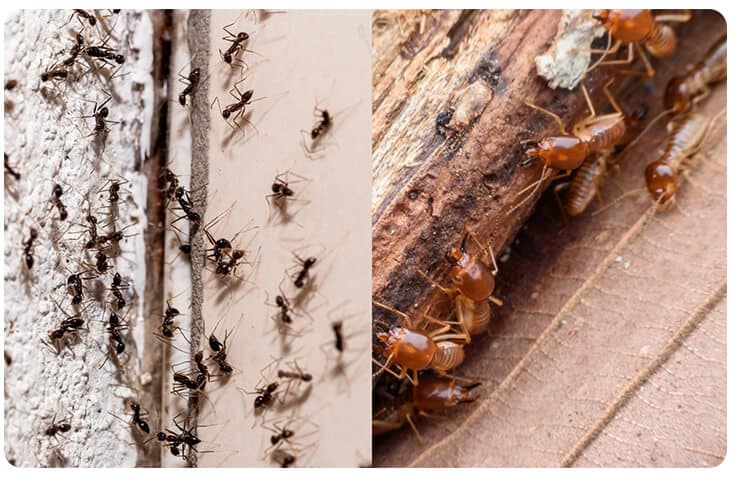
When trying to identify termites, it’s crucial to understand what different types of termites look like. So, what does a termite appear as? For starters, most termites have a similar appearance to ants, leading many to confuse ants with termites. Termite soldiers, for instance, possess strong jaws and are more robust in comparison to the termite nymph and termite larvae.
The king and queen are essential members of a colony termite, with the queen being larger due to her egg-laying capacity. Speaking of eggs, they are often found in the heart of their homes or nests. One distinguishing feature is their wings; during certain seasons, you might encounter termites with wings, which they shed when they’re ready to start a new colony.
Termite soldiers have a unique appearance compared to other members, such as the soldiers termite, which has pronounced jaws. When you’re aiming to control termite infestations, it’s pivotal to be adept at identifying termites to differentiate them from other insects. And remember, while ants and termites can appear quite similar, there are distinct differences, especially when it comes to their waist, wings, and antennae.
How to Identify Termites vs Ants: Key Differences
While both ants and termites play significant roles in our ecosystem, it’s essential to differentiate between the two, especially when it comes to home infestations. Here are the primary differences to help you identify whether you’re dealing with ants or termites:
Body Structure of Termites
Termites have a broad waist connecting their thorax and abdomen, giving them a more uniform body shape. In contrast, ants possess a distinctly pinched or constricted waist, which easily sets them apart.
Antenna Shape
Termites have straight, bead-like antennae, whereas ants have antennae that are bent or elbowed, forming a clear right angle.
Wing Length
Both ants and termites can have wings during certain stages of their lives. However, termite wings are of equal length, transparent, and twice as long as their body. Ants, on the other hand, have front wings that are noticeably longer than their back wings.
Colour
Generally, termites are lighter in colour, often a pale, milky white to light brown. Ants can vary in colour but are usually darker, ranging from brown to black.
Behaviour
Termites are more elusive, preferring dark, moist environments. If you stumble upon a group of insects consuming wood or finding mud tubes on walls, you’re likely dealing with termites. Ants, however, are often seen out in the open, foraging for food and are more commonly found in areas where food particles are present.
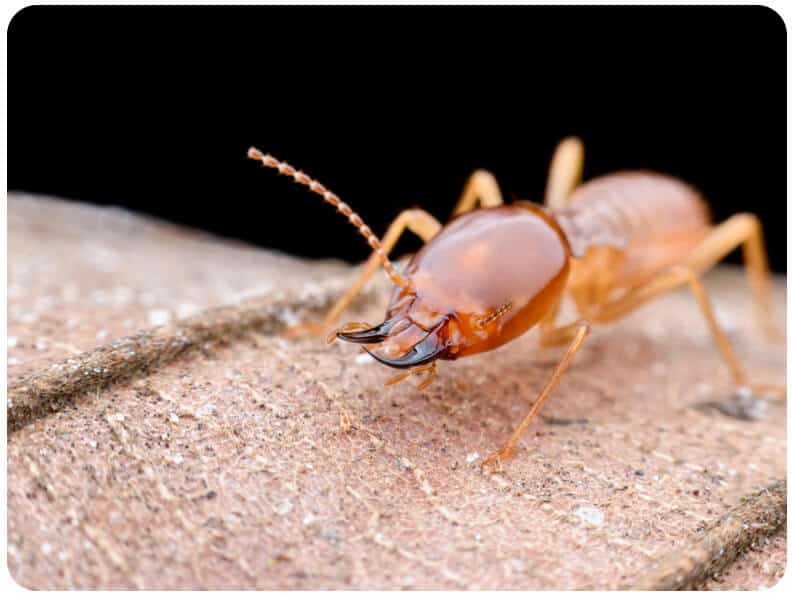
Brisbane Termite Species (What Termites Look Like)
Some termite species found in Brisbane include:
- Schedorhinotermes spp
- Cryptotermes or Drywood termites
- Heterotermes ferox
- Coptotermes acinaciformis
- Microcerotermes turneri
Subterranean Termites – Schedorhinotermes spp
If you find termites in your home they are probably subterranean termites. These are the most common and destructive of all the termite species. They live underground in vast colonies of tens of thousands of termites. Outside subterranean termites eat dead wood and trees, but they are equally partial to interior timber. There are several different genera of this species
These termites love damp conditions. They build mud tunnels as protection and burrow deeper underground in dry weather. They vary in colour from white to dark brown or even black.
They are about 7mm long
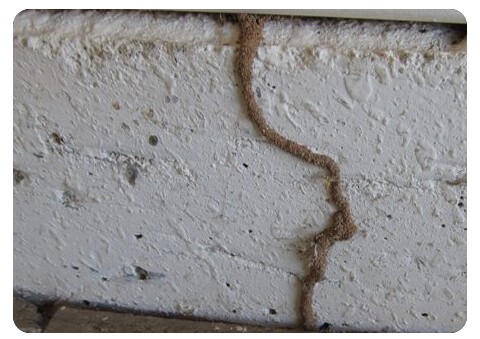
Subterranean Termite Shelter Tubes
The first clue many Brisbane residents have of termite activity in their homes is the presence of shelter tubes in or around the building. Termites build four types of shelter tubes. The tubes are made from a mix of saliva, faeces, wood and soil. The tunnels can grow to over 50 metres in length.
- Working tubes protect termites collecting food for the colony
- Drop tubes offer the termites escape from the wood source back onto the ground
- Exploratory tubes are used to find new food locations or to move to another colony
- Swarm tubes send winged termites on their way to build their own nests
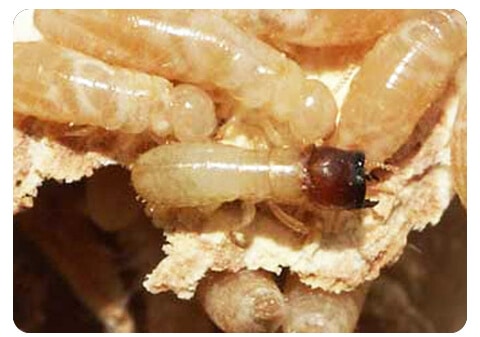
Cryptotermes or Drywood Termites
The West Indian Drywood termite is a very destructive termite species. These native South American termites live in much smaller colonies of under 1,000 individuals. They nest in wood and never leave it. They get all the moisture they need from the wood and will continue to live and feed on the wood until it collapses.
They live in high humidity areas and cannot survive in dry and arid conditions. External damage is seldom seen and often the only evidence that there are termites in the timber is the faecal dust found where they are active. They make tiny holes in the wood surface.
A worker termite is 4.2 to 6 mm long. This insect falls under the control of the Australian Biosecurity Act of 2014 so Queensland officials have the right to remove timber from your property if they have evidence of an infestation.
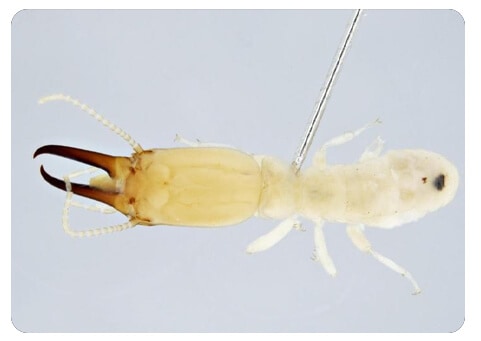
Heterotermes Ferox Termites
These termites have been known to damage decks and outdoor posts. They are not considered a serious threat to property as they are only likely to damage wood that is damp or wet. They generally cause superficial damage. They are 4.75 mm long and have very round heads with noticeably dark mandibles. These termites don’t build mounds and they don’t create vast galleries as other termites do. For this type of pest problem, a termiticide spray will often resolve the problem.
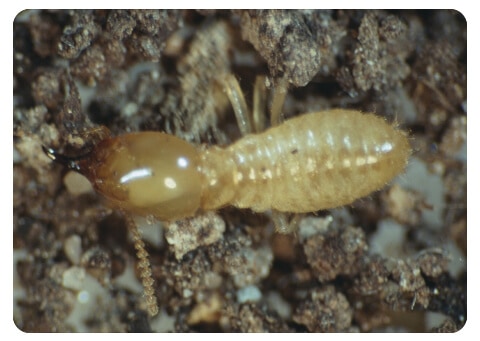
Coptotermes Acinaciformis
This termite has caused thousands in damage to property across the city. They build nests in stumps, trees and buildings. They will attack homes up to 50 metres from their nest, using subterranean tunnels. Effective termite inspections must cover the grounds as well as the building to ensure that your home is termite free.
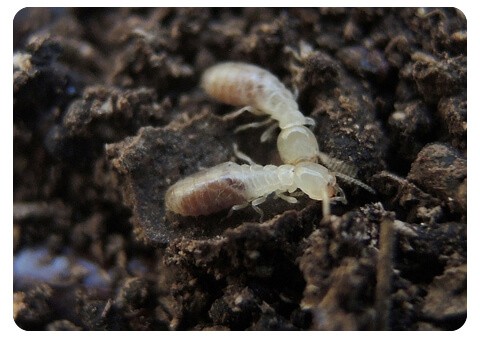
Microcerotermes Turneri
With a citywide presence, Microcerotermes Turneri build nests in posts, mounds and even underground. They are easily identifiable by their pale colour. They are about 4.5mm in length. Though these pests are destructive, they are relatively easy to control and a spray is usually all that is needed.
Identify Termites from the Damage They Cause
It isn’t always possible to identify termites from the damage they cause but there are some obvious signs of what termites may be responsible for timber damage.
Subterranean termites start to feed off the wood from the ground up. They usually enter buildings through the underfloor structure. If your home has a crawl space it is more vulnerable, and you should keep an eye open for wood damage and mud tubes. Wood that has fallen victim to termites will develop funnels that often run along the wood grain.
Drywood termites usually enter a building through the roof. Inspect the wood in your attic for tiny holes and for frass piling up close by.
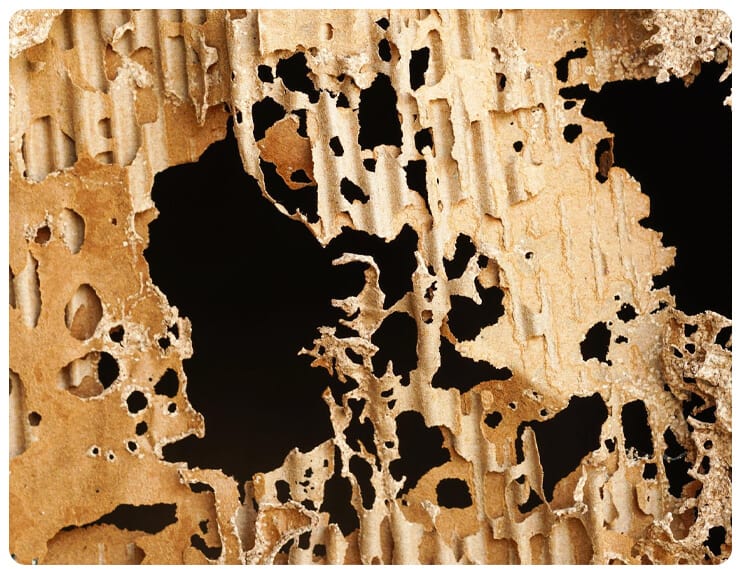
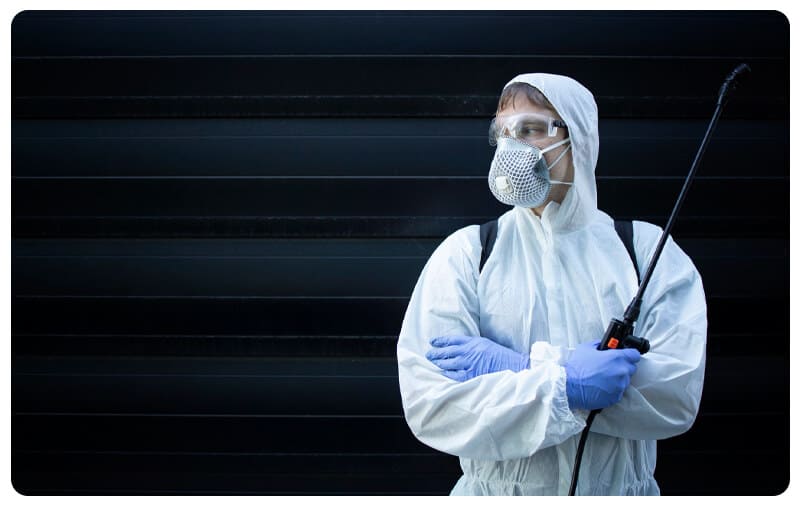
Call EPM Pest Control to Identify the Termites and Their Locations
Identification of termites is an important first step to finding the termite colony nest that houses these small insects. Suitable termite control products may differ from one termite species to the next.
Our pest control team has been identifying and treating termites for over 10 years. The team members know how much damage this pest can do to timbers. Proper identification is essential to bring this pest under control and ensure that it does no more damage.
